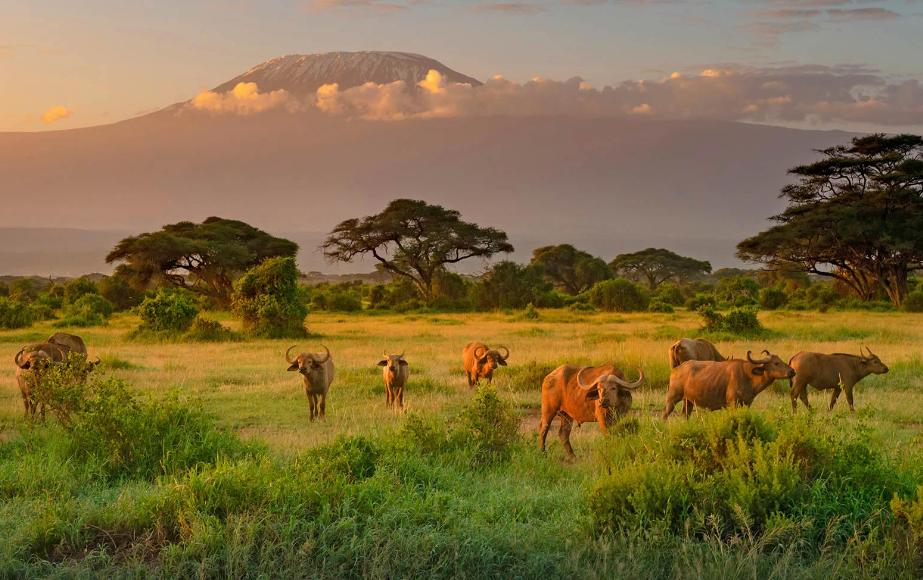
(Salonga National Park)
Salonga National Park, located in the Zaire Nature Reserve, is located in the central African plain, covering an area of 36,000 square kilometers. 200-500 meters above sea level.
It is a tropical rainforest. Established in 1970 to protect the equatorial forest environment, it is one of the largest forest parks in the world. Divided into two large areas, north and south, the management office is located in Monkoto.
There are many kinds of animals and plants in the territory, the special bonobo.
(Okapi Deer Wildlife Sanctuary)
The Okapi Wildlife Reserve covers a fifth of the Ituri forest in the North-East of the Republic of Congo. The reserve and its forests are part of the Zaire River basin, one of the largest drainage systems in Africa. Many endangered primates and birds live in the reserve.
There are 30,000 Okapi deer left in the wild, 5,000 of which inhabit the reserve. There are also other spectacular sights in the area, including waterfalls on the IturiRiver and EpuluRiver. It is inhabited by hunters of the Mbuti and Efe, traditional dwarf nomads.
(Lake Assal)
Lake Assal is located in the northwest of Djibouti City, an area of more than 10 square kilometers, the lake is 150 meters below sea level, is the lowest point on the African continent. Lake Assal is also a natural salt pan, rich in potassium and bromine.
Each liter of water contains 330 grams of salt, which is rare in the world. Stand on the hills of the lake and admire the shimmering natural salt layer, like a silver world. Djibouti desert accounts for 90% of the country's area, the emergence of such a lake, is regarded as a cornucopia. In fact, salt is one of Djibouti's main natural resources and one of its main exports.
(Conakry)
Located on the Atlantic coast, it is the capital of Guinea. The largest city in the country. Located on the southwest coast of Guinea, on the eastern side of the Atlantic Ocean, it consists of the Ross Islands, the Kalum Peninsula and the coastal land connected with the peninsula, and is the largest seaport in Guinea and one of the largest seaports in West Africa.
It has a tropical rainforest climate, with north winds prevailing in January and south winds in July. The highest annual average temperature is 34℃, the rainy season is from May to November every year, and the average annual rainfall is about 3000mm.
(Mount Nimba Strict Nature Reserve)
Nestled between Guinea and Ivory Coast, Mount Nimba rises high above the savanna surrounding it. The slopes at the foot of the savanna are covered with dense forests and contain an extraordinary variety of flora and fauna, as well as some unique species of local animals, such as viviparous toads and chimpanzees that use stones as tools.
(Bissau)
Bissau is the capital and port of Guinea-Bissau, an African country on the Atlantic Ocean. From 1446 it became a Portuguese colonial stronghold and slave trading market. Bissau has a tropical oceanic monsoon climate with high temperatures throughout the year and an average annual temperature of about 27 ° C.
From the port of Bijijidi at the mouth of the Reba River, there is a wide avenue leading to the presidential palace. On both sides of the main street, Catholic churches, foreign companies, banks, post offices and other buildings are lined. Scattered throughout the city were castles and forts built during the Portuguese era that served as hard evidence of the colonists' crimes.
On the outskirts of the city, the multi-ethnic style of domed thatched houses and low mosques offer a unique view. A large international airport is located 8 km from the city, the main one being Oswald Biello Airport.
(Orange Islands National Park)The Orange Islands National Park, established on 1 December 2000 and located in the heart of Bubak, is the largest nature reserve and an important tourist destination in Guinea-Bissau. The Orange Islands National Park covers an area of 27,000 hectares and includes most of the southern archipelago of Guinea-Bissau.
The boundary of the Orange Islands National Park consists of 10 km of near-sea area with forests, coastal tropical savannas, mangroves, tunnels and shallow sea beaches, which occupy 17,400 hectares.
(Joao de Mero Islands National Marine Park)
The Joao de Mero Islands National Marine Park, one of only two national parks in Guinea-Bissau, was established on 1 August 2000 and is known for its exotic fauna and flora, making it an important tourist destination in Guinea-Bissau.
The Joao de Mero Islands National Marine Park comprises four small islands in the northeast region, covering an area of 495 square kilometers, this nature reserve includes both Marine and land parts, numerous wildlife, and also has valuable turtle species.
Joao de Merlot Islands National Marine Park is home to three of the world's rarest sea turtle species: green ridley, hawksbill and Olive Ridley. These turtles have found their way to the beach, where they lay their eggs on the beautiful sand. In addition, it is also a paradise for 900,000 birds, which gather here in winter to escape the cold.

